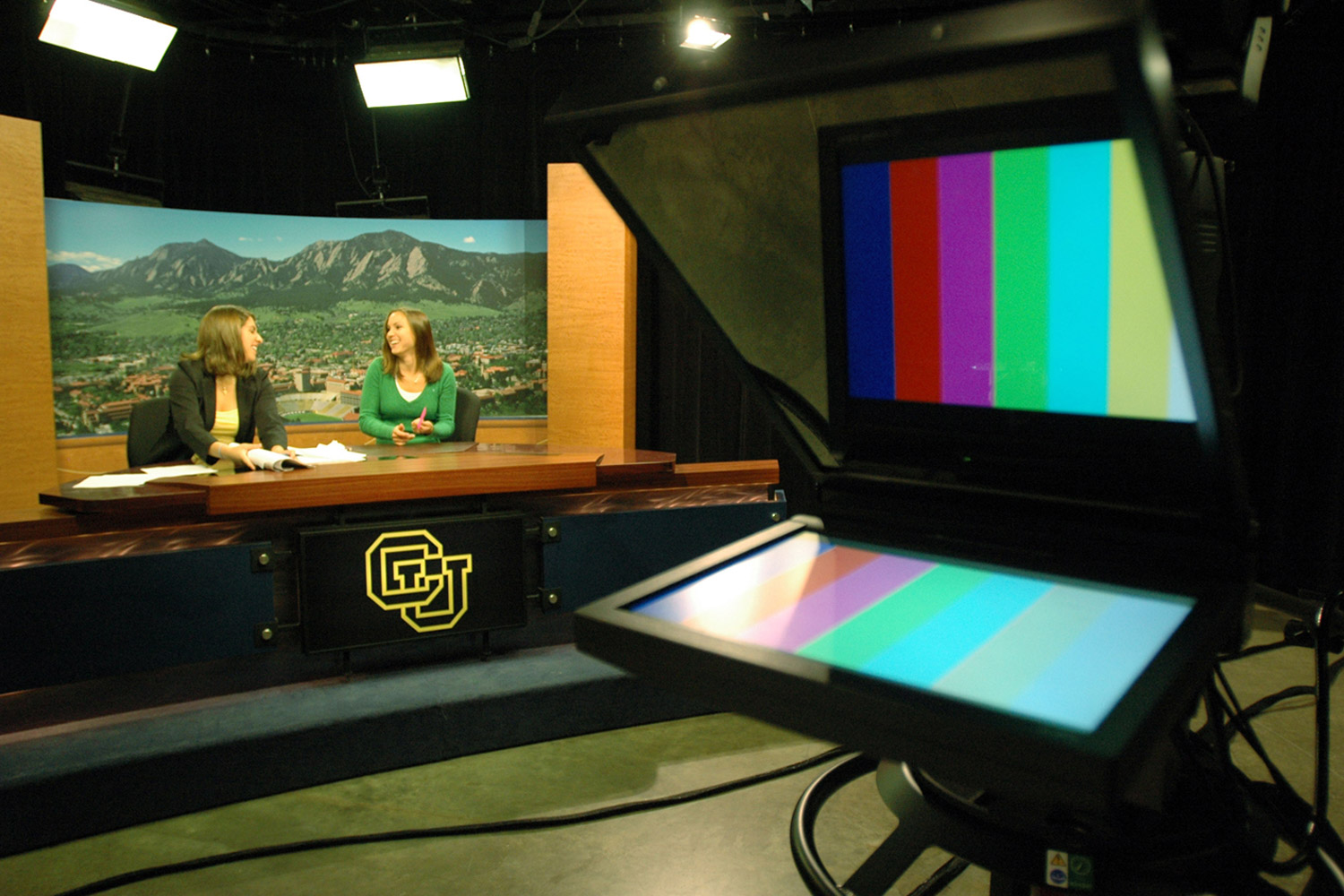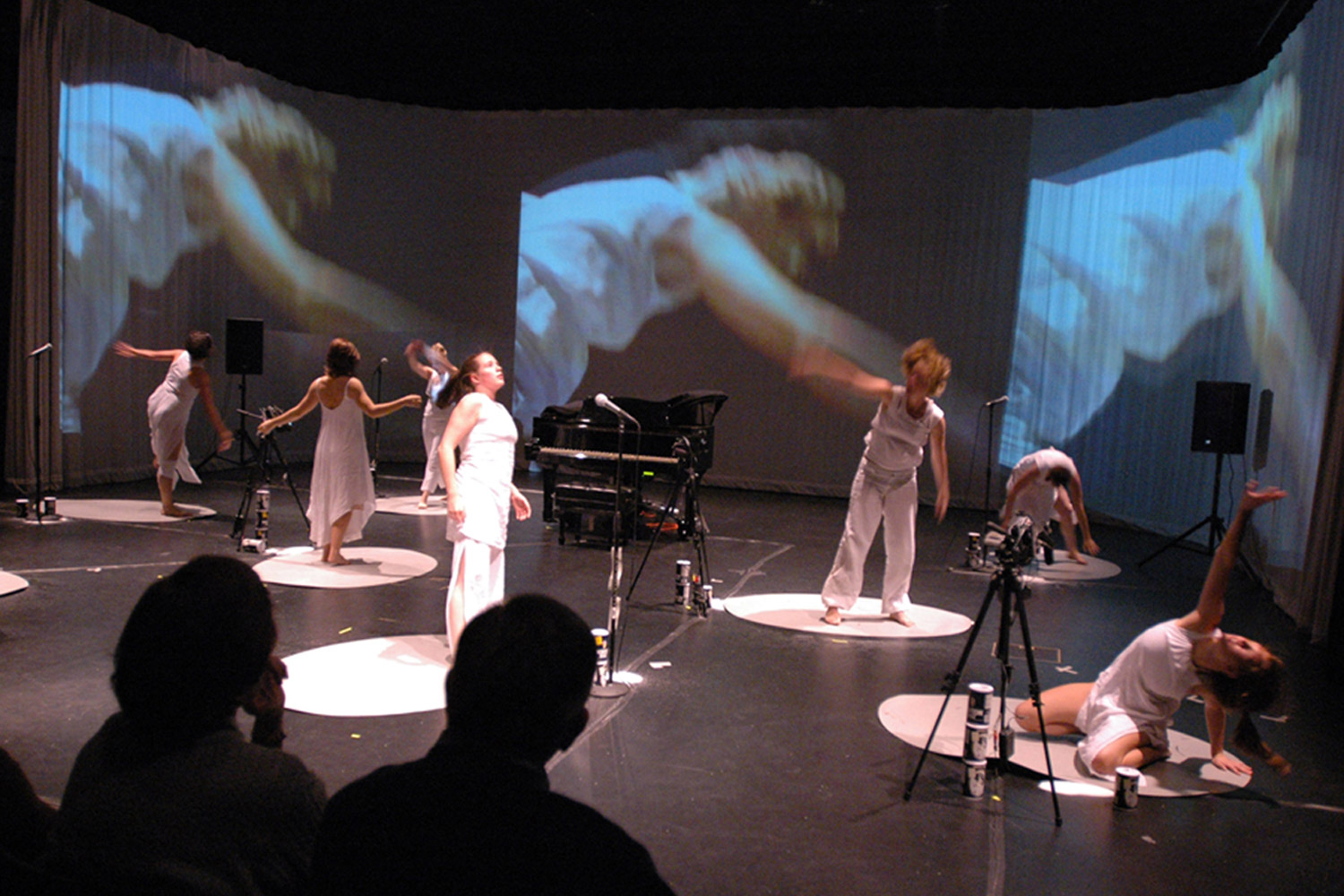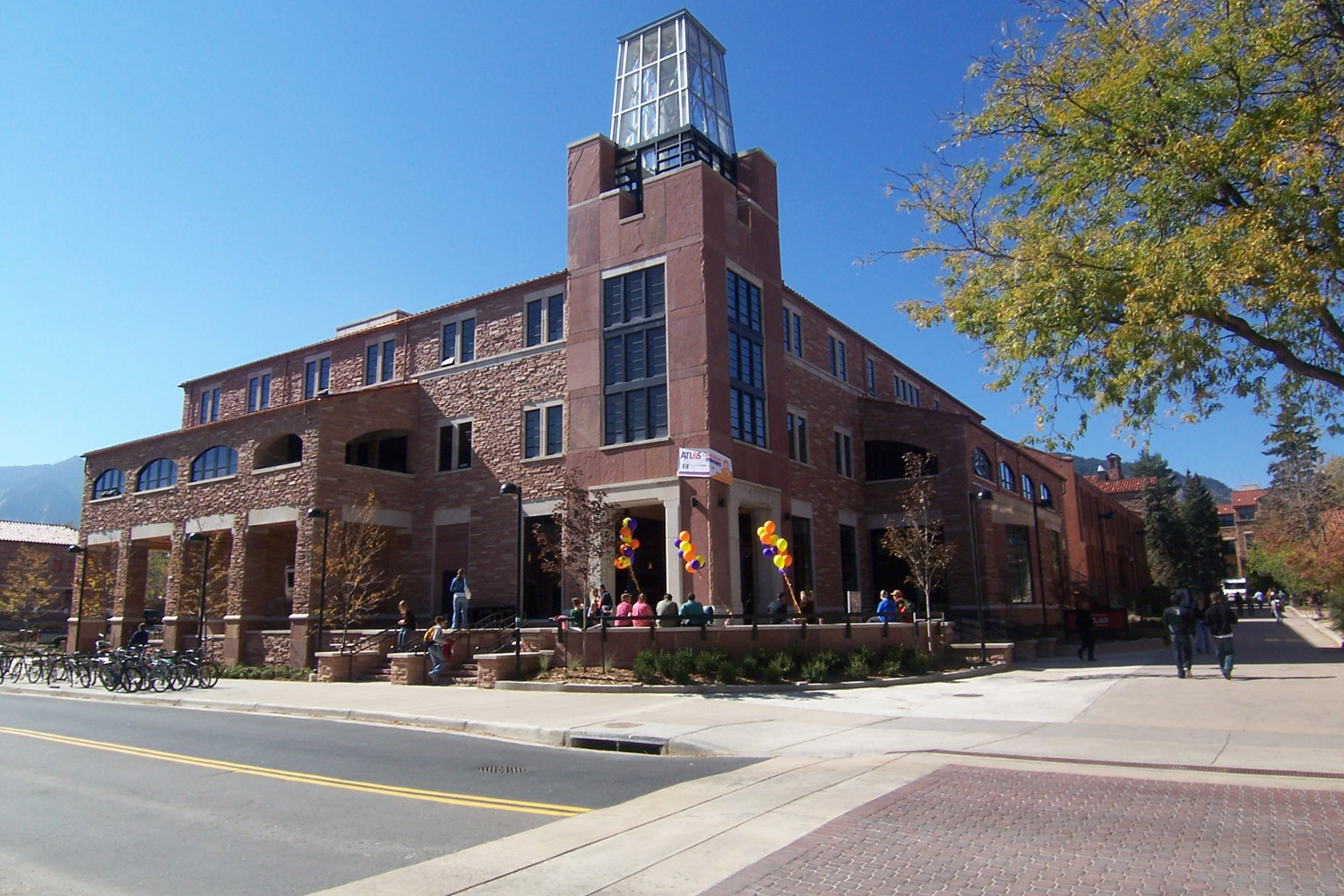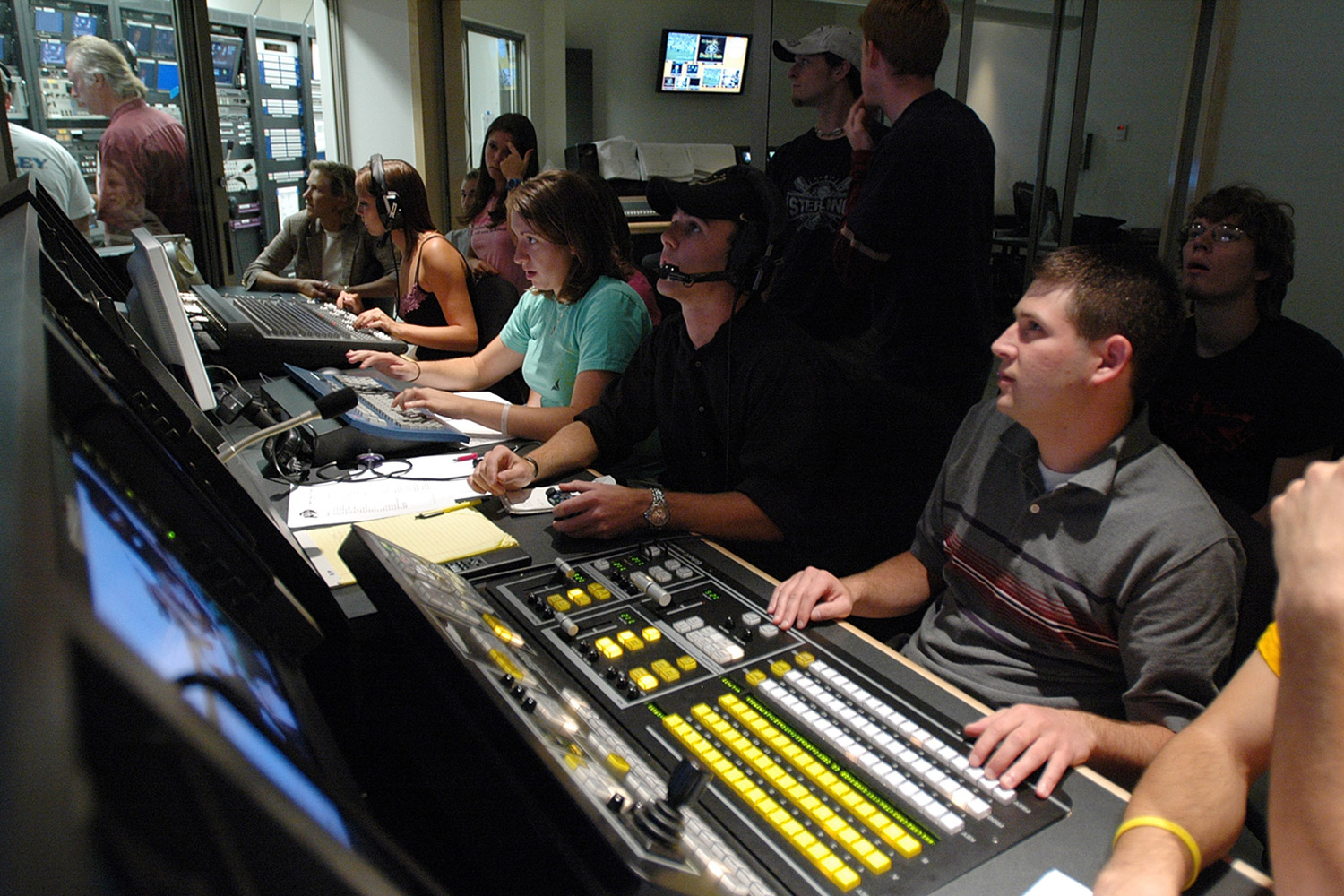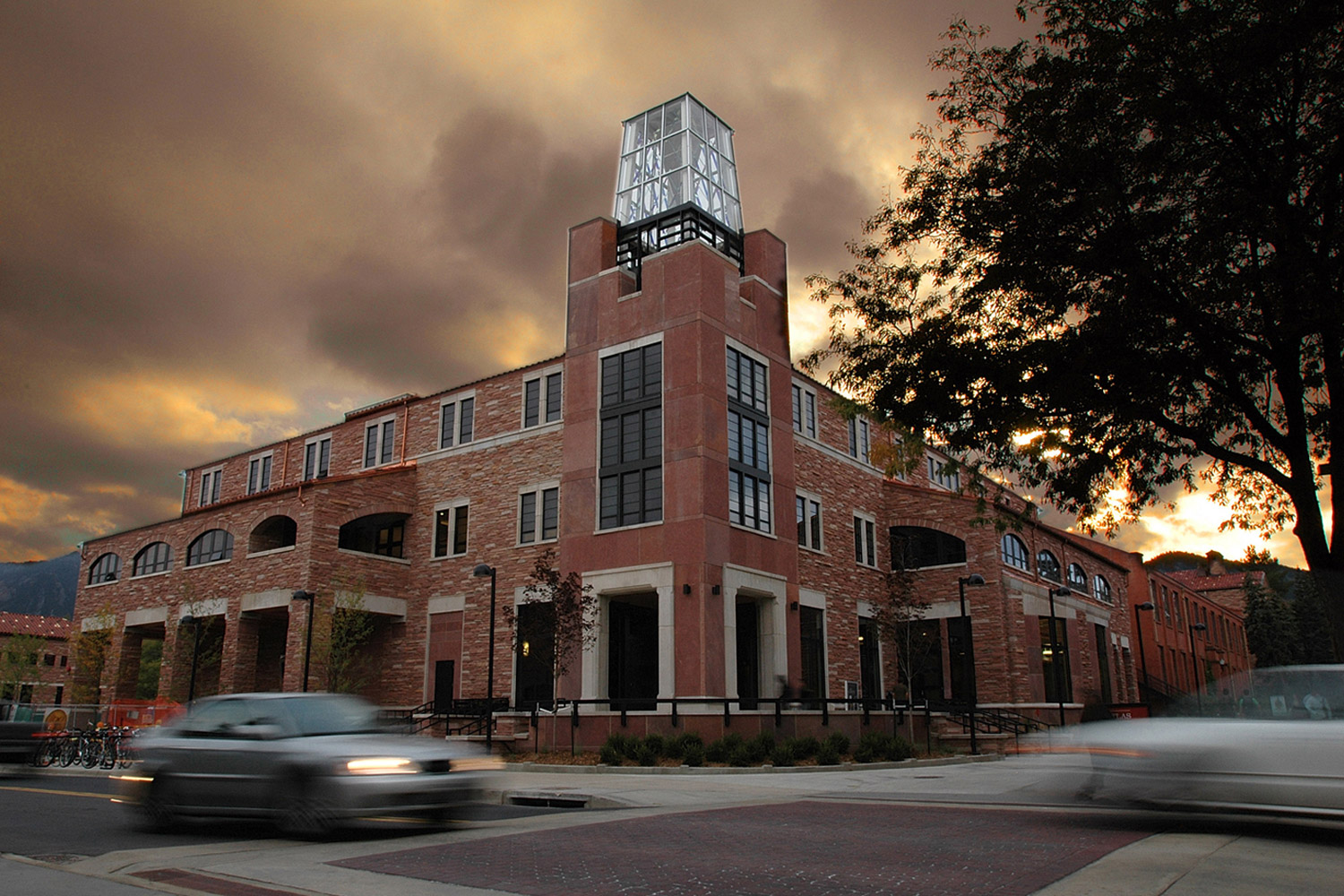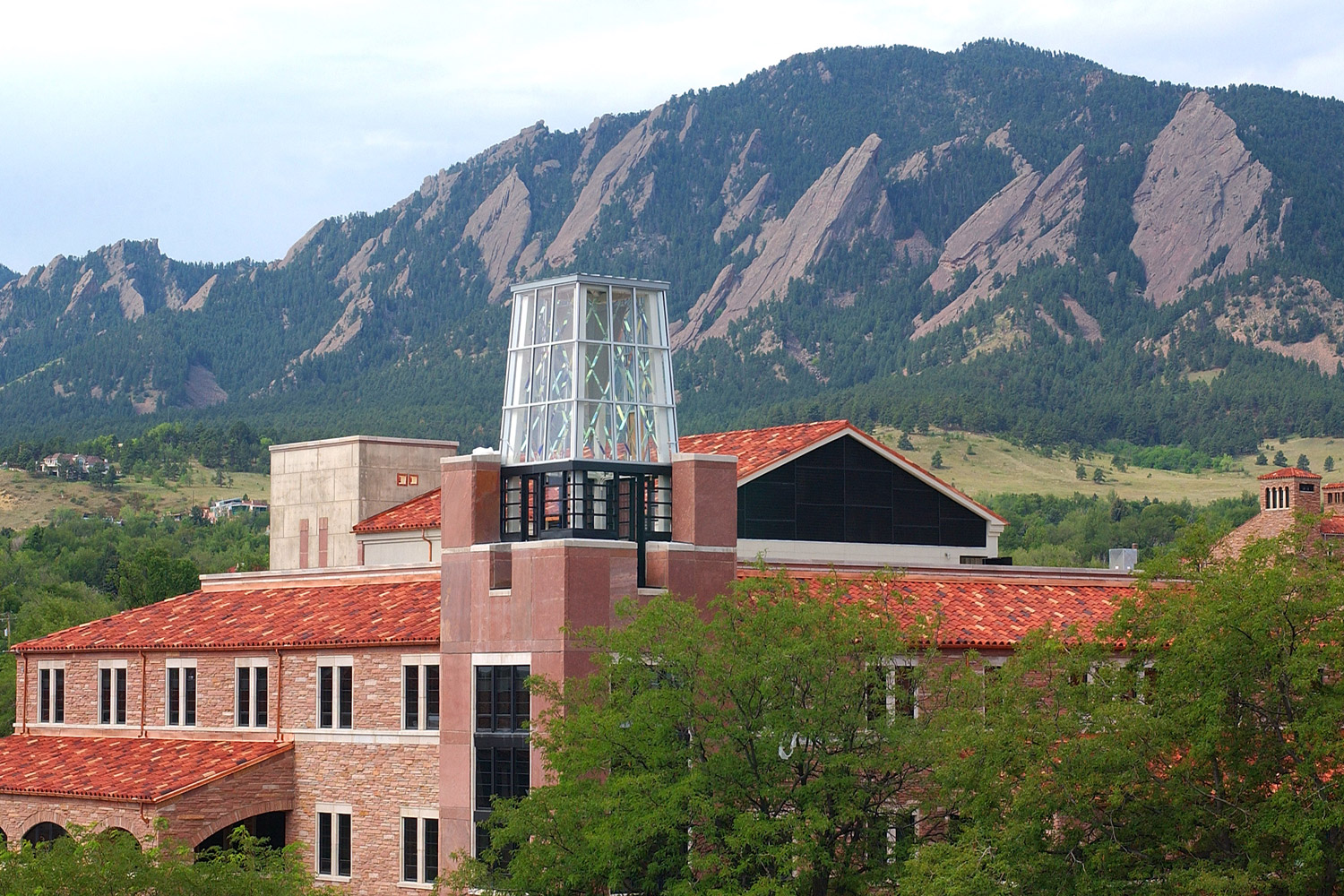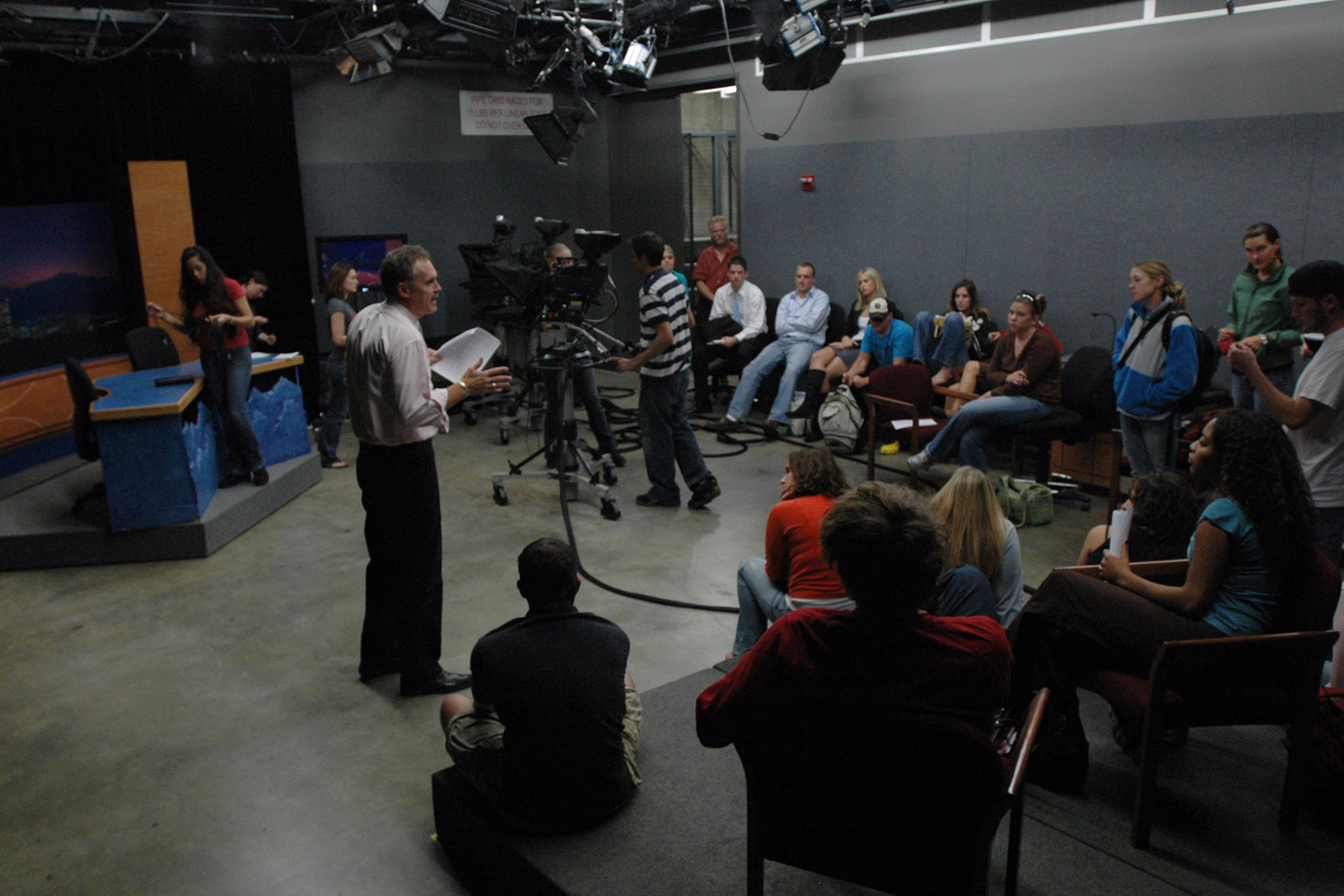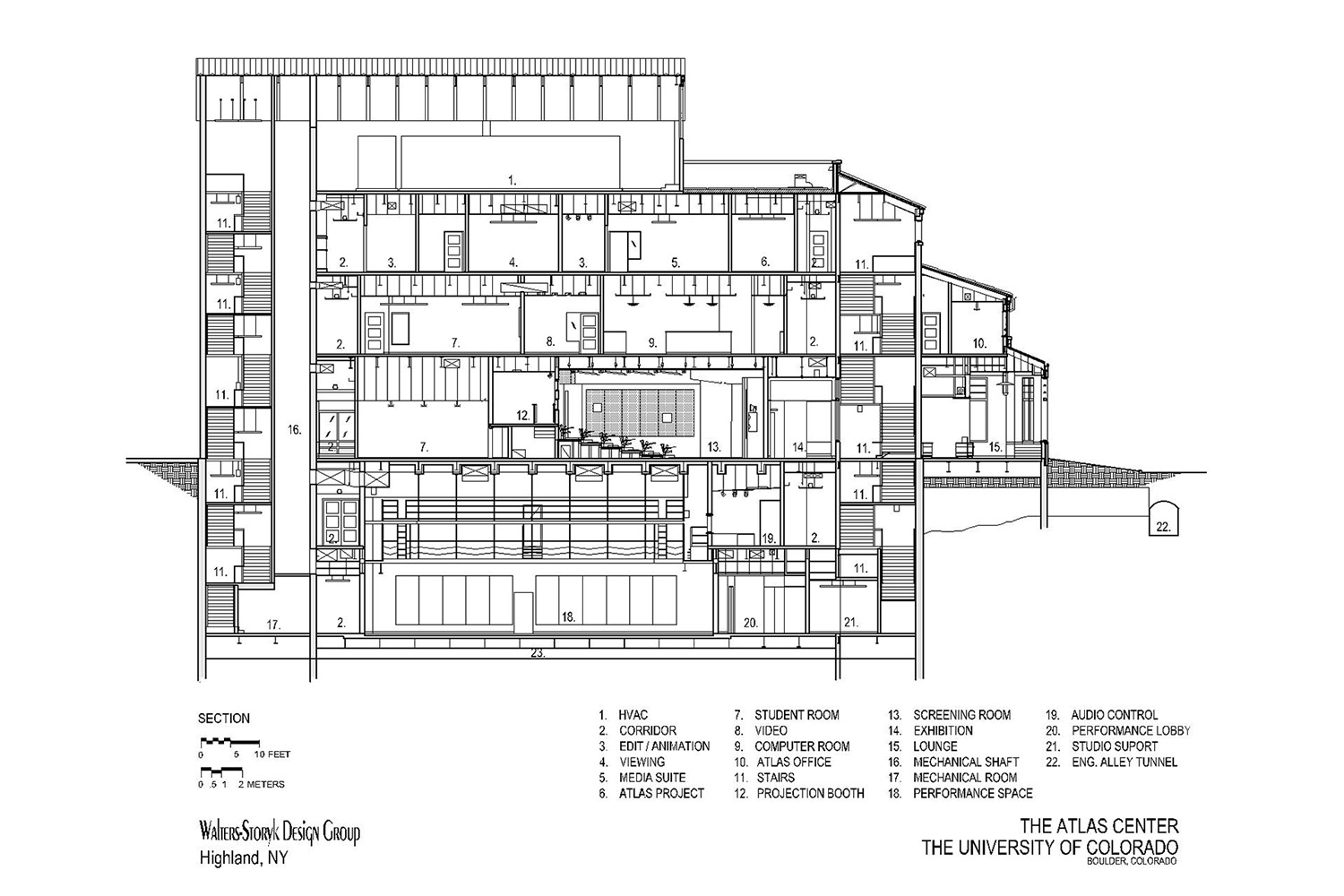Project Description
Overview
The $31 million ATLAS building is a unique facility designed to focus on the convergence of technology, media and the arts. ATLAS stands for Alliance for Technology, Learning and Society.
Located in the heart of the campus northeast of the University Memorial Center, ATLAS includes a state-of-the-art black-box performance space, a modern broadcast production studio, a large video wall in the building’s lobby, a film screening room, a technology-enhanced auditorium, videoconferencing rooms and four computer classrooms. The facilities are open to students of all majors.
The 75-seat film screening room is among the best in the nation, according to ATLAS faculty director Bobby Schnabel, and the black-box theater is on the cutting edge of technology-enhanced performance spaces located anywhere in the nation on a public university campus.
“While we view the ATLAS building as a technology beacon for the CU-Boulder campus, it’s also a place for interdisciplinary study,” Schnabel said. “More than 6,000 students from a broad range of disciplines will be taking courses here each semester. For many of them, we think the ability to apply modern technology to myriad academic problems may be one of the highlights of their academic careers.”
At the center of ATLAS is the two-story, 3,000-square-foot black box performance space. This versatile, high-tech theater is designed to provide digital technology for creative digital cinema, interdisciplinary performances that combine musicians, dancers, visual artists and technology, visiting artist webcasts, interactive audio and visual performances, and student and faculty video production.
The ATLAS black box provides audio and video projection capabilities that CU-Boulder has never had before, according to associate professor of music, Michael Theodore. “The audio system in the black box studio, combined with the multiple high-quality video projectors, allows us to create immersive environments for performances,” he said. “Before ATLAS, we could put on a show with sound from two speakers. Now, we can surround an audience with sound and video, and it opens up a lot of new possibilities.”
For the past seven years, Theodore and assistant professor of dance Michelle Ellsworth have co-taught an interdisciplinary performance class for students in all majors and colleges. Fall 2006 was the first semester the class has met in the ATLAS black box studio.
“The idea is to make it easy for students and faculty to dream up pieces that involve technology in some way and then have an easy means of putting it all together,” Theodore said. “We’re trying to think about how we can make something artistically interesting with technology.”
“The promise of ATLAS is not just its technology and facilities, but also the community of artists it will foster,” Theodore said. “It’s a productive environment where people understand what this new work is and how to experiment in a way that’s likely to yield results you can share with people in performance in other venues.”
Theodore is thrilled, he said, because ATLAS represents an invitation to students and faculty to create interdisciplinary performance. “The beautiful thing is, if you have an idea that’s going to involve technology, you come here and you plug it in, essentially, and it’s ready to go,” Theodore said. “And that means there’s that much more time for perfecting your idea.”
The ATLAS building is home to the ATLAS Institute’s Technology, Arts and Media program as well as its Assessment and Research Center. Also located at ATLAS are offices of the National Center for Women & Information Technology, faculty and staff offices for the CU-Boulder film studies department and the Faculty Teaching Excellence Program.
Visitors can easily recognize the ATLAS building by its unique exterior. Large video display screens are mounted on the east and north sides, and the distinctive tower on the roof is lit at various times throughout the year with colors signifying activities happening on campus or across the nation.

